Approaches of Artificial Intelligence
Introduction
Artificial intelligence (AI) is the study of how to make machines that behave intelligently. It includes a variety of methods that allow robots to simulate human intellect. Approaches in AI are different ways to make machines smart like humans. They include methods like symbolic AI, which uses logical rules, and evolutionary computation, inspired by natural selection. Bayesian Networks use probabilities, while deep learning mimics the brain's neural networks and many more. These approaches enable machines to reason, learn, understand language, and analyze visuals, advancing AI's ability to solve complex problems and enhance our lives.
Different Approaches of Artificial Intelligence
1. Symbolic AI:
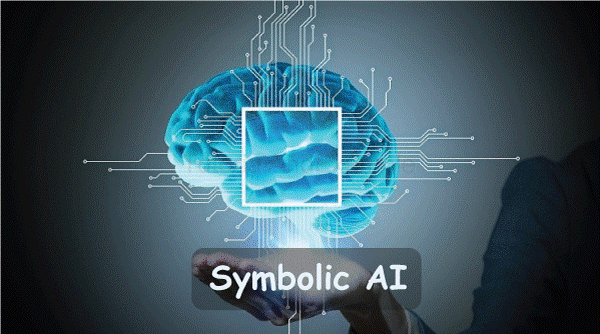
Symbolic AI, also known as logic-based AI, is a kind of artificial intelligence that focuses on passing on information and reasoning, and logical rules. It entails creating systems that can interpret and manipulate symbols such as words or mathematical calculations.
In Symbolic AI, knowledge is typically represented using symbols and rules. These rules describe relationships and logical connections between different symbols. By applying logical reasoning to these rules, machines can make inferences and draw conclusions.
For example, imagine a Symbolic AI system that helps diagnose diseases based on symptoms. It would have a set of rules that link symptoms to possible diseases. By examining the symptoms provided by a patient and applying the rules, the system can narrow down the potential diagnoses.
Symbolic AI systems thrive in logical reasoning and rule-based decision-making tasks. However, they may struggle with ambiguity or situations in which there are no clear instructions to follow. However, symbolic AI is still a significant approach in artificial intelligence, especially when working with organized domains and well-defined rule sets.
2. Evolutionary Computation:
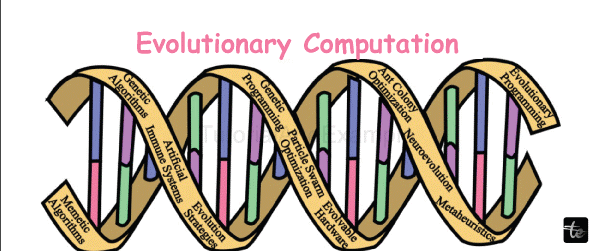
Evolutionary Computation is an artificial intelligence technique that uses biological evolution principles to tackle complicated issues. It entails developing algorithms that imitate natural selection and genetic variation.
In Evolutionary Computation, a population of potential solutions is generated and evaluated based on their fitness or performance in solving a given problem. The fittest individuals, or solutions, are selected to reproduce and create offspring. This process imitates the idea of "survival of the fittest" in nature.
The offspring inherit characteristics from their parents and undergo variations or mutations. These variations introduce diversity into the population, allowing for exploration of different solution possibilities. The population is then subjected to selection, reproduction, and mutation cycles, with the hope that over time, better solutions emerge.
This iterative process continues until satisfactory or optimal solutions are found. Evolutionary Computation is widely used for optimization problems where the goal is to find the best or most efficient solution from a huge number of choices.
Consider the usage of an Evolutionary Computation algorithm to calculate the optimal route for a delivery van. The algorithm would generate a population of different routes, evaluate their fitness based on factors like distance or time, select the best routes as parents, introduce variations or mutations in the offspring's routes, and repeat the process until an optimal route is discovered.
When the search space is huge and standard approaches fail to identify optimal answers, evolutionary computation is a strong way for addressing complicated problems. This technique leverages the power of genetic diversity and selection to uncover potential solutions in a wide range of disciplines by replicating the principles of evolution.
3. Bayesian Networks:
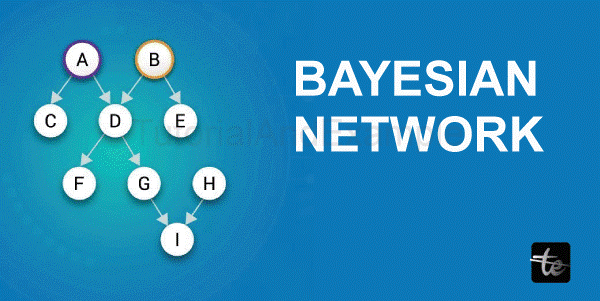
Bayesian Networks are the approach in artificial intelligence that utilize probability theory to model and reason about uncertain relationships between variables. They are particularly useful for making predictions and handling uncertain information.
In Bayesian Networks, variables are represented as nodes, and the relationships between variables are depicted as directed edges or links between the nodes. Each node in the network represents a variable, and the edges indicate the dependencies or influences between variables.
Bayesian Networks also incorporate conditional probabilities, which quantify the likelihood of a variable's value based on the values of its parent variables. These probabilities are obtained from prior knowledge or learned from data.
The network structure and conditional probabilities together form a probabilistic model that can be used for reasoning and inference. Given observed evidence about certain variables, Bayesian Networks can calculate the probabilities of other variables in the network.
Consider a Bayesian Network that simulates the link between weather, road conditions, and the chance of a vehicle collision. The network can evaluate the likelihood of a vehicle collision occurring on a certain route by analyzing meteorological conditions and using conditional probabilities.
Bayesian Networks are powerful because they allow for updating beliefs and making predictions based on new evidence. They can handle incomplete or uncertain information and provide a quantitative measure of uncertainty.
By representing and reasoning about probabilistic relationships, Bayesian Networks have applications in various domains, including medical diagnosis, risk assessment, and decision support systems. They enable machines to make informed decisions and predictions by incorporating uncertainty into their models.
4. Swarm Intelligence:
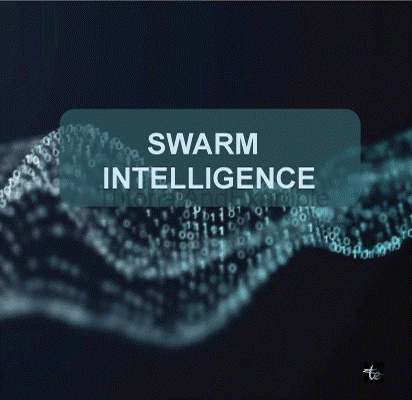
Swarm Intelligence is an approach in artificial intelligence that takes inspiration from the collective behavior of social insect colonies, such as ants or bees. It involves creating algorithms that simulate the cooperation and self-organization observed in these natural systems.
In Swarm Intelligence, a group of simple agents, called "particles" or "swarm members," interact with each other and their environment to solve problems. These agents communicate and exchange information locally, without relying on a central controller or global knowledge.
The collective behavior emerges as the agents follow simple rules and interact with their neighbors. Through local interactions, the swarm members can exhibit complex behaviors and accomplish tasks that would be challenging for individual agents alone.
For example, imagine a Swarm Intelligence algorithm used to optimize the delivery routes for a fleet of vehicles. Each vehicle represents an agent, and they communicate with nearby vehicles to exchange information about traffic conditions or delivery locations. By collectively adjusting their routes based on this shared information, the swarm can achieve more efficient overall delivery routes.
Swarm Intelligence algorithms can also adapt to changes in the environment, such as adding or removing swarm members, without requiring reconfiguration of the entire system.
Swarm Intelligence is particularly effective in solving problems where decentralization, robustness, and scalability are essential. It finds applications in various domains, including optimization, robotics, pattern recognition, and data clustering.
By leveraging the power of collective intelligence, Swarm Intelligence provides an alternative approach to problem-solving, offering innovative solutions that mimic the efficiency and adaptability observed in natural swarms.
5. Cognitive Computing:
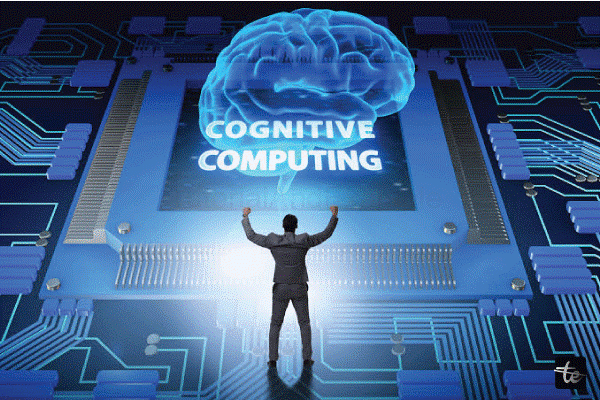
Cognitive computing systems are designed to handle unstructured and ambiguous data including text, images, and audio. They intend to mimic human cognitive processes like as perception, attention, memory, and decision-making.
Cognitive Computing's ultimate objective is to create robots that can interact with humans in more natural and intelligent ways, aiding in difficult decision-making, offering insights, and complementing human talents in domains such as healthcare, finance, customer service, and research.
Cognitive Computing pushes the boundaries of AI by emulating human-like cognitive skills, allowing machines to grasp and respond to the complexities of the actual world.
For example, a Cognitive Computing system could understand a conversation, analyze the context, and respond appropriately based on the meaning and intent conveyed. It could also learn from previous interactions to improve future responses and provide personalized recommendations or solutions.
These many AI techniques give numerous methodologies for addressing complicated challenges and furthering the area of artificial intelligence.
The four main approaches of Artificial Intelligence
The four concepts, "acting humanly, thinking humanly, thinking rationally, acting rationally," refer to different dimensions of artificial intelligence:
- Acting Humanly: This concept focuses on creating AI systems that can perform tasks or exhibit behaviors that are indistinguishable from those of a human. It involves mimicking human actions, responses, and behaviors, such as natural language conversation, facial recognition, or motor skills. The goal is to make machines appear as if they are acting like humans.
- Thinking Humanly: Thinking humanly aims to replicate human thought processes and cognitive abilities in AI systems. It involves developing models or algorithms that simulate human reasoning, problem-solving, and decision-making. This approach focuses on understanding how humans think and emulating those cognitive processes in machines.
- Thinking Rationally: Thinking rationally involves designing AI systems that follow logical reasoning principles to arrive at sound conclusions. It focuses on formal logic, mathematical reasoning, and logical inference to achieve rational thought processes. This approach aims to ensure that machines can reason logically and make deductions based on available information.
- Acting Rationally: Acting rationally emphasizes creating AI systems that make decisions and take actions that maximize the chances of achieving desired goals. It involves designing AI algorithms or agents that behave optimally or rationally, even if the behavior differs from human-like or logical reasoning. The focus is on achieving effective outcomes rather than simulating human or logical thought processes.
These four concepts represent different perspectives and goals within the field of AI. While they may overlap in certain areas, they provide distinct approaches to understanding and developing intelligent systems.